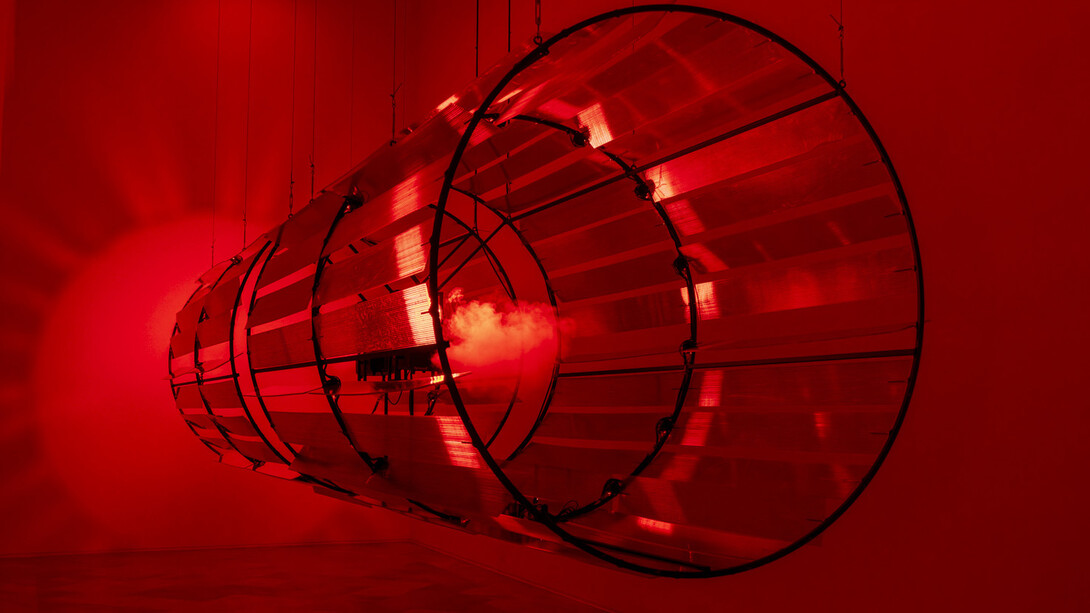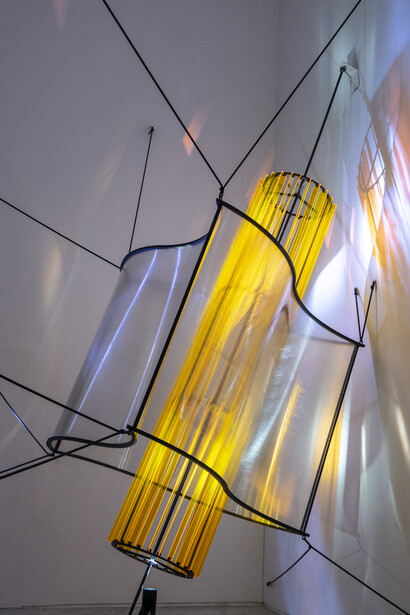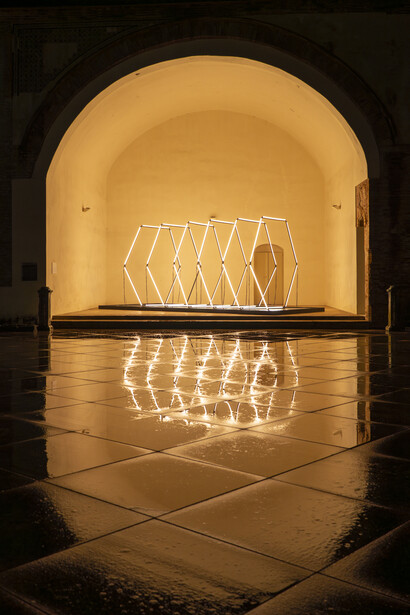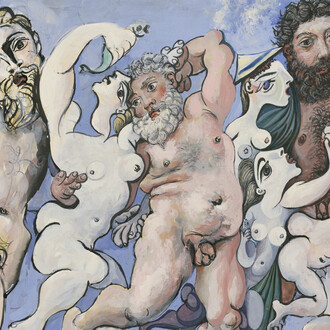If presence were to become echo, it would have to rely on sensory experience to be truly lived.
The eternal present by Cachito Vallés (Seville, 1986) is conceived as a kind of positioning, an interval, and a placement that directly addresses, through experience, the idea of being, of passing through space, of traversing time, of existing through contemplation and the lived experience of inhabiting
The title is taken from Byung-Chul Han’s essay The salvation of beauty, which connects beauty with time, noting that “beauty invites us to linger” when one reaches the “eternity of the present,” when “eternity shines like a light that diffuses through difference.” Beneath this relationship of contingent ideas—such as eternity and light, whether intended or tangible—lies the concept of beauty as narration and motive. This project offers a comprehensive vision of the artist’s trajectory through a selection of works that reflect the primary concerns of his practice and thought, as well as the foundations supporting his production. It represents a point of continuation in his career, closely linked to technological experience from the South.
Centered around large-scale installations and framed as a reflection on time and its variations, the exhibition establishes ongoing connections between the scientific and the poetic. This investigation delves—through the materialization of the works themselves and the experience they generate—into related intangibles such as suspension, latency, presence, interval, and ephemerality. The exhibition gathers works created since 2018 alongside eleven new pieces conceived specifically for the South Cloister. Additionally, a final installation created expressly for the Arch of Saint Michael, located within the Monumental Zone of the former Cartuja de Santa María de las Cuevas, establishes a dialogue between architecture, the industrial and monastic memory of the building, and contemporary art.
Cachito Vallés’ works embody profound reflections on transcendent themes and fundamental human concerns about our position in the universe. These pieces invite the audience to contemplate time—its fleeting passage, circularity, and temporal dimension; light—as a source of creation and knowledge, as energy that allows us to see but can also blind; color as the relationship between light and the human mind; and space with its vastness. These considerations intertwine with other recurring explorations in the artist’s practice, such as the constant repetition of patterns or duality found in nature, combined with interests in geometry, abstraction, movement, and sound. The result is a body of works that synthesize all these elements, sometimes inviting interactive experiences hat foster meditation, introspection, or transcendence.
Vallés’ early investigations lie at the intersection of North American pictorial abstraction and the systematic geometry characteristic of conceptual and minimalist currents. This is complemented by the influence of experimental music, especially forms incorporating chance, sound environments, and the dematerialization of time as compositional elements. Simultaneously, his work draws on the legacy of practices developed at Madrid’s Centro de Cálculo during the 1960s and 1970s, where art was conceived as a system governed by logical-mathematical structures, with both aesthetic and conceptual implications, integrating science, technology, and artistic creation. The body of work presented in this exhibition materializes the interests Vallés has pursued since his beginnings, culminating in sensitive architectures that enable spaces for reflection and contemplation. His approach to scientific ideas emerges from experimentation, connecting them with his own interpretation to move, from material and luminous exploration, towards a personal and mystical terrain where the experience of time and presence is stretched into active perception.
The exhibition is conceived as a project in itself; it is not a mere collection of works but an integrally created proposal. The layout of the rooms unfolds as a play of symmetries: the initial gallery dedicated to painting finds its reflection in Retícula (Grid), where painting transforms into installation. Meanwhile, the large red cylindrical piece Redshift engages in dialogue with the final room’s installation, Solitude, closing the circle. Between these extremes, works are arranged in an almost mirrored journey, where the visitor’s movement is not governed by hierarchies but flows freely, activating some pieces through physical engagement and personal connection. The artist seeks to produce a shift in perception: to make time seem to slow, space to be perceived differently, and light to cease being merely functional to become an experience in itself; to provoke a sensation of expanded present, where one feels fully inhabiting a moment that does not rush toward an end but is fully lived. The invitation is to linger in time, to stroll through time, to live The eternal present.













![Saul Steinberg, The museum [El museo] (detalle), 1972. Cortesía del Museo de Arte Abstracto Español](http://media.meer.com/attachments/dfbad16c22c5940b5ce7463468ac8879f3b4bf23/store/fill/330/330/042ecf3bcd2c9b4db7ddbc57cb32e950c095835f7b5cd55b6e1576a6e78c/Saul-Steinberg-The-museum-El-museo-detalle-1972-Cortesia-del-Museo-de-Arte-Abstracto-Espanol.jpg)


